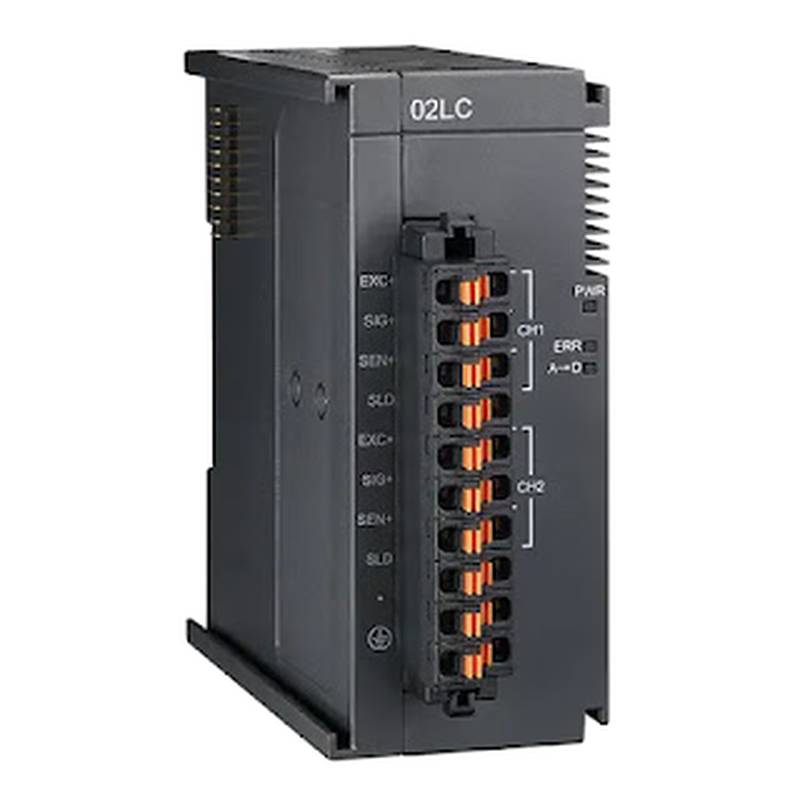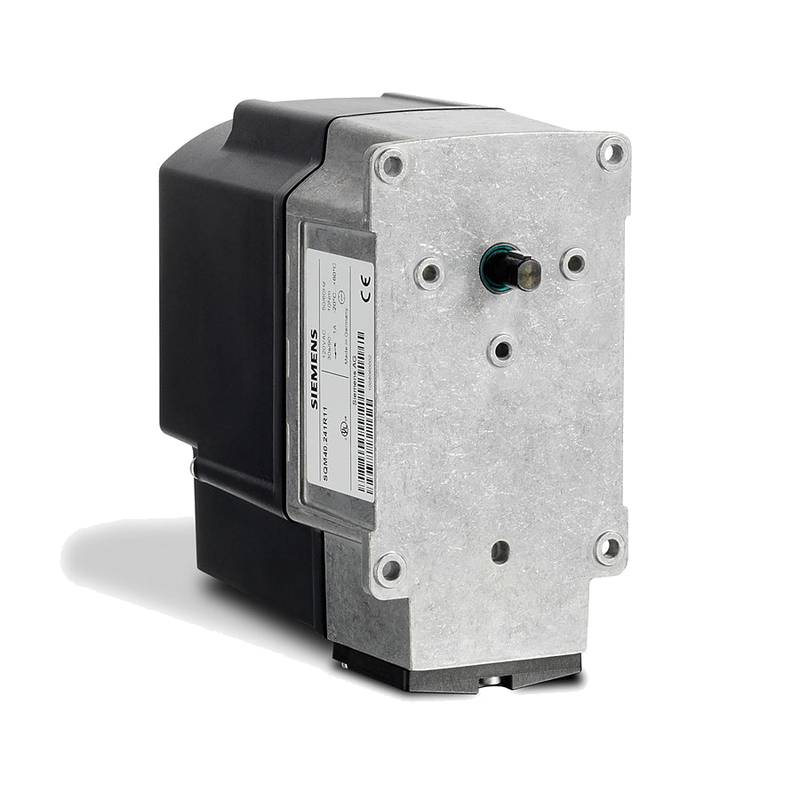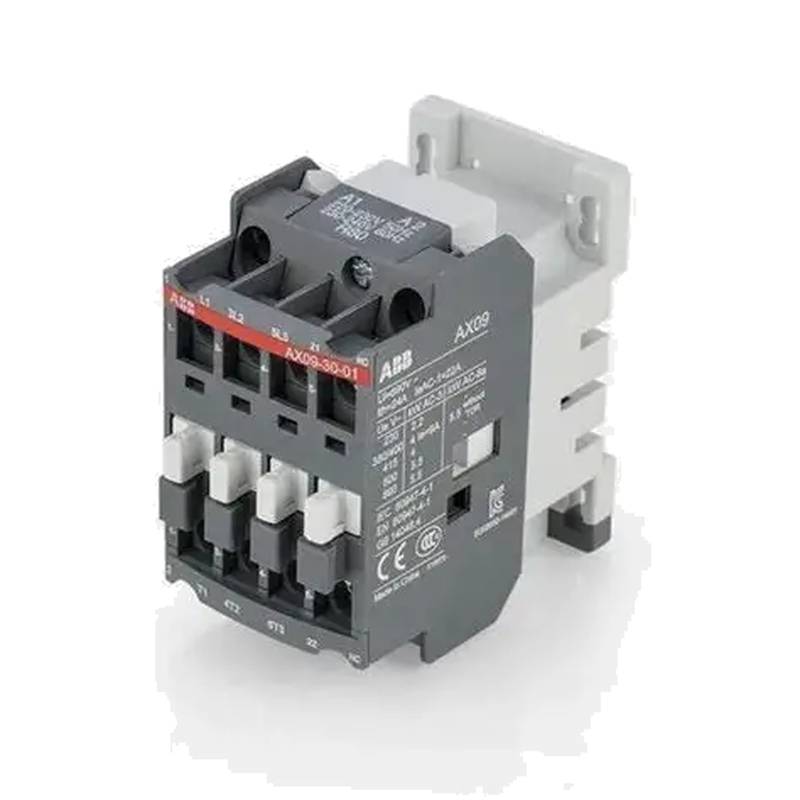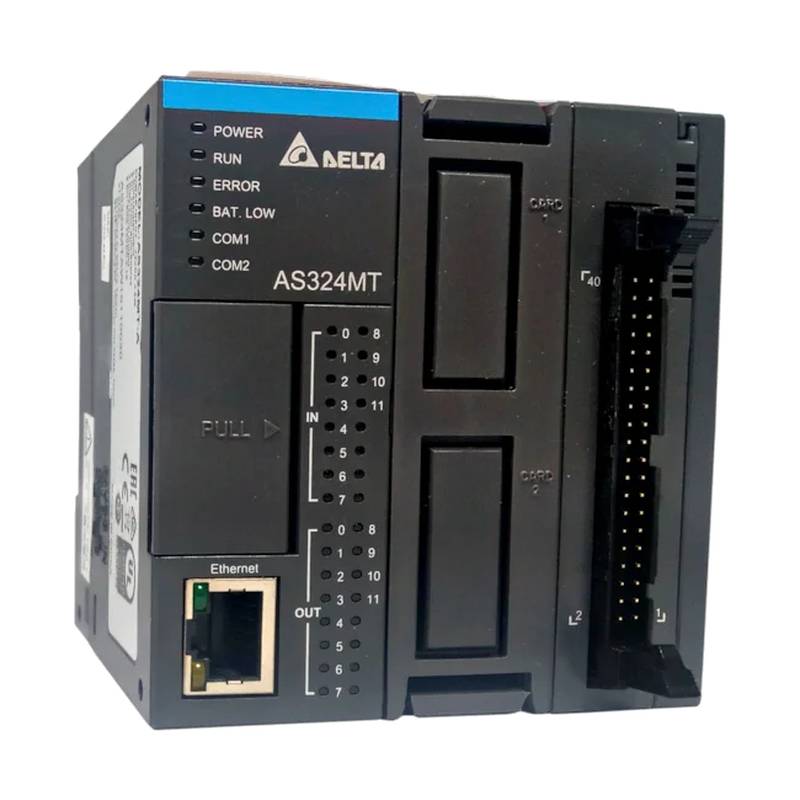
The Delta AS02LC-A Dual Loop PID Control Module stands as a robust solution for advanced process control in demanding industrial environments. This module distinguishes itself through its dual-loop capability, offering independent and simultaneous control of two distinct process variables, a feature crucial for complex automation tasks. Its core advantages lie in its precision, reliability, and adaptability, making it a preferred choice for applications requiring tight temperature, pressure, or flow regulation. The AS02LC-A boasts an impressive input/output flexibility, supporting a wide array of sensor types and actuator signals, further enhancing its integration potential across diverse machinery and systems. Technical parameters highlight its capability for rapid response times and stable operation under fluctuating conditions, ensuring optimized process efficiency and product quality.
Product Specifications
| Feature | Specification |
| :---------------- | :------------------------------------------------ |
| Control Loops | Dual Independent PID Loops |
| Input Types | Thermocouple (J, K, T, R, S, B, E, N), RTD (Pt100, JPt100), Analog Voltage (0-10V), Analog Current (4-20mA) |
| Output Types | Relay Output (SPDT, 250VAC/3A), Analog Voltage (0-10V), Analog Current (4-20mA) |
| Control Output | PID, ON/OFF, Proportional, Integral, Derivative |
| Sampling Time | 100ms |
| Communication | RS-485 (Modbus RTU) |
| Power Supply | 100-240VAC, 50/60Hz |
| Operating Temp. | 0°C to 50°C |
| Dimensions | Standard DIN rail mount |
Core Features & Market Positioning
The Delta AS02LC-A differentiates itself in the competitive industrial automation market through its sophisticated dual-loop PID algorithm, which allows for simultaneous, independent control of two critical process parameters. This capability is paramount in complex systems where maintaining precise conditions for multiple variables, such as temperature and pressure in a dual-zone oven or flow rates in parallel processing lines, is essential. Its broad sensor input compatibility, encompassing thermocouples, RTDs, and standard analog signals, provides unparalleled flexibility, reducing the need for specialized signal converters and simplifying system design. The module's robust construction and reliable performance under challenging industrial conditions solidify its market position as a high-value component for applications demanding accuracy and uptime. Industry professionals recognize the AS02LC-A for its ability to deliver consistent, high-quality results, minimizing waste and energy consumption through optimized process management.
Key Application Scenarios
The inherent versatility of the Delta AS02LC-A Dual Loop PID Control Module makes it exceptionally suited for a wide spectrum of industrial applications. In the plastics and rubber processing industry, it excels in managing the precise temperature control required for injection molding machines and extruders, ensuring consistent product quality and material integrity. For the food and beverage sector, the AS02LC-A is instrumental in maintaining exact cooking, pasteurization, or chilling temperatures, crucial for food safety and optimal product characteristics. Furthermore, in the semiconductor manufacturing environment, its dual-loop control is invaluable for managing the intricate temperature and atmosphere profiles within environmental chambers or curing ovens, where even minor deviations can compromise sensitive electronic components. Its adaptability also extends to chemical processing, pharmaceutical production, and advanced materials manufacturing, wherever precise, independent control over multiple process variables is a non-negotiable requirement.
Practical System Integration Guidance
Integrating the Delta AS02LC-A Dual Loop PID Control Module into existing or new automation systems is streamlined by its user-friendly design and comprehensive communication capabilities. For wiring, connect sensors to the designated input terminals, observing polarity and signal type specifications to prevent damage. Actuator outputs, such as relays or analog signals, should be connected to their respective output terminals, ensuring they fall within the module's specified load ratings. Power supply connections must adhere to the 100-240VAC range provided. Programming the AS02LC-A typically involves configuring the PID parameters (proportional gain, integral time, derivative time) for each loop independently, often through a dedicated software interface or via the RS-485 Modbus RTU communication port. Initial setup should include defining input types, output modes, and alarm setpoints. For seamless integration, consider consulting Delta's application notes or the user manual for specific examples related to your process equipment, such as linking the AS02LC-A to a PLC or HMI for centralized monitoring and control.
Operation and Risk Mitigation
Safe and effective operation of the Delta AS02LC-A Dual Loop PID Control Module hinges on understanding its functionalities and potential failure points. Key operational considerations include accurate sensor calibration to ensure reliable readings, proper tuning of PID parameters to achieve stable control without overshoot or oscillation, and setting appropriate alarm thresholds for critical process deviations. Risk mitigation strategies involve performing regular maintenance checks on wiring integrity and sensor health, implementing robust power surge protection for the module and connected devices, and ensuring that emergency stop functionalities are properly integrated into the overall system design. In the event of a fault, the AS02LC-A typically provides diagnostic codes via its display or communication interface. Common error codes may indicate sensor disconnection (e.g., open circuit), input signal out of range, or internal module malfunctions. Always refer to the official Delta AS02LC-A user manual for a complete list of error codes and recommended troubleshooting procedures to prevent equipment damage and ensure personnel safety.
Scalability & Long-Term Value
The Delta AS02LC-A Dual Loop PID Control Module offers significant long-term value through its inherent scalability and compatibility with evolving industrial automation architectures. Its modular design allows for easy replacement or addition of control modules within a larger system, facilitating upgrades without necessitating a complete overhaul. The RS-485 Modbus RTU communication interface is a cornerstone of its integration capability, enabling seamless connection with a wide range of PLCs, HMIs, and SCADA systems, thus fitting comfortably into existing infrastructure. For businesses looking towards Industry 4.0 adoption, the AS02LC-A can be integrated into networked systems for data acquisition, remote monitoring, and advanced analytics. This connectivity facilitates predictive maintenance, process optimization through historical data analysis, and integration with broader IIoT platforms, ensuring that the investment in the AS02LC-A remains relevant and valuable as digital transformation initiatives progress.
FAQs
What is the primary function of the Delta AS02LC-A?
The Delta AS02LC-A is designed for precise dual-loop PID control.
It independently manages two separate process variables simultaneously.
This ensures tight regulation of parameters like temperature and pressure in complex machinery.
Can the AS02LC-A handle different types of temperature sensors?
Yes, it supports various thermocouple types like J, K, and T.
It also accommodates RTD sensors such as Pt100 and JPt100.
This wide compatibility simplifies integration with existing sensor infrastructure.
What are the output capabilities of the Delta AS02LC-A module?
It provides relay outputs for switching loads up to 250VAC/3A.
Analog voltage outputs (0-10V) are available for variable control.
Analog current outputs (4-20mA) are also included for precise signal transmission.
How does the dual-loop functionality benefit industrial processes?
It allows for independent control of two critical parameters at once.
This is essential for complex processes requiring simultaneous regulation.
It enhances efficiency and product quality by maintaining optimal conditions for multiple variables.
What communication protocols does the AS02LC-A support?
The module primarily uses RS-485 for communication.
It implements the Modbus RTU protocol for data exchange.
This standard protocol ensures broad compatibility with PLCs and HMIs.
Is the Delta AS02LC-A suitable for high-temperature applications?
Yes, with appropriate thermocouple inputs, it handles high temperatures.
Its robust design ensures stable operation within its specified temperature range.
Always confirm sensor limits and module operating conditions for extreme applications.
What is the typical response time for the AS02LC-A control module?
The module features a sampling time of 100ms for rapid data acquisition.
This quick sampling allows for fast adjustments to process changes.
It contributes to precise and stable PID control outcomes.
Can the AS02LC-A be integrated with IoT platforms?
Yes, through its Modbus RTU interface, it connects to gateways.
These gateways can then transmit data to cloud-based IoT platforms.
This enables remote monitoring and advanced data analytics for IIoT applications.
What are common troubleshooting issues with PID controllers like the AS02LC-A?
Common issues include sensor failures or incorrect wiring.
Poor PID tuning can lead to oscillations or slow response times.
Overload on output relays may cause operational failures.
What kind of power supply does the Delta AS02LC-A require?
It operates on a wide AC power range from 100 to 240VAC.
The module also accepts 50/60Hz frequency.
Ensure the power source is stable and meets these specifications for reliable operation.
























